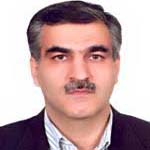Numerical prediction of several radiation and CBL fog events over Iran using the WRF model for late December 2015
Author(s):
Article Type:
Research/Original Article (دارای رتبه معتبر)
Abstract:
In this study it has been attempted to simulate the occurrence of radiation and CBL fog during late December 2015 in Orumiyeh, Arak, Bushehr, Zahedan, Hamedan and Shahrekord airports, using the mesoscale WRF model. To simulate radiation and CBL fogs, the output of the WRF model with five different configurations as presented in table 1 was used, and then four visibility calculation algorithms were applied to the output of the model to find the best configuration and visibility calculation algorithm for the prediction of the considered fog events. The WRF model version 3.9.1 with Lambert conformal projection, using two nested domains with 16-km and 4-km grid spacing was used for the simulation. Based on the results of some previous studies (e.g. Lin et al., 2017; Van der Velde et al., 2010; Roman-Casc´on et al., 2012), because of the sensitivity of the fog prediction to cloud microphysics, planetary boundary layer and long-wave radiation schemes, five different configurations of the WRF model with varying physical parametrization schemes were implemented. In the first series of experiments, the five mentioned configurations of the model were run using 28 vertical levels. Then four horizontal visibility calculation algorithms including SW99 (Stoelinga and Warner,1999), FSL (Doran et al., 2009), G2009 (Gultepe et al., 2009) and RUC (Benjamin et al., 2004) were applied on the model output to calculate the horizontal visibility separately for each model output and for six synoptic stations in the domain. It is seen that, since the amount of liquid water content (LWC) of the cloud with all model configurations is zero or nearly zero, the calculated horizontal visibility was much greater than 10 km for all stations. In general, the model showed poor results for the simulation of relative humidity in the boundary layer and thus the occurrence of fog. Since some previous studies (e.g. Yang and Gao, 2016; Philip et al., 2016; Tardif, 2007) have emphasized the importance of high vertical resolution to resolve the main fog formation processes, in the next series of experiments the number of vertical levels in the model was increased from 28 to 32, such that 11 vertical levels were considered from the ground level up to 200 m above ground. The model was then implemented with the same five configurations as in the first experiments. Examining the results revealed that the model found the skill of recognizing moisture and fog in most cases, and predicted 5 out of 6 cases of CBL and 2 out of 4 cases of radiation fogs. For the verification the outputs for the predictions of fog events the calculated visibilities were compared with the verifying observational data and hit rate and equitable threat score were calculated. The evaluation indicated that the configuration 2 with 32 vertical levels combined with SW99 and G2009 algorithms performed better for the prediction of visibility for stations considered here. It can also be said that increasing the number of vertical levels close to the surface is of great importance in improving the quality of fog forecasting, because high vertical resolution is required to realistically represent the vertical structure and magnitude of the radiative cooling in the first few meters of the atmosphere, and thus obtain more accurate forecasts of radiation fog. Using high vertical resolution in simulations, results in an acceptable increase of liquid water content (LWC) and thus improves the accuracy of fog prediction. The results also show that the model's skill to predict CBL fog is higher than that of radiation fog in this case study. By comparing the simulated and observational two meter temperature values, it was observed that the simulated air temperature is overestimated, especially for the radiation fog. Previous researches have also shown a positive bias in predicted air temperature at two-meter height in radiation fog conditions, which is probably due to the inability of the model to simulate the actual radiative cooling associated with fog conditions in the first few meters of the atmosphere (Roman-Casc´on et al., 2019).
Keywords:
Language:
Persian
Published:
Journal of the Earth and Space Physics, Volume:46 Issue: 3, 2020
Pages:
561 to 582
magiran.com/p2196747
دانلود و مطالعه متن این مقاله با یکی از روشهای زیر امکان پذیر است:
اشتراک شخصی
با عضویت و پرداخت آنلاین حق اشتراک یکساله به مبلغ 1,390,000ريال میتوانید 70 عنوان مطلب دانلود کنید!
اشتراک سازمانی
به کتابخانه دانشگاه یا محل کار خود پیشنهاد کنید تا اشتراک سازمانی این پایگاه را برای دسترسی نامحدود همه کاربران به متن مطالب تهیه نمایند!
توجه!
- حق عضویت دریافتی صرف حمایت از نشریات عضو و نگهداری، تکمیل و توسعه مگیران میشود.
- پرداخت حق اشتراک و دانلود مقالات اجازه بازنشر آن در سایر رسانههای چاپی و دیجیتال را به کاربر نمیدهد.
In order to view content subscription is required
Personal subscription
Subscribe magiran.com for 70 € euros via PayPal and download 70 articles during a year.
Organization subscription
Please contact us to subscribe your university or library for unlimited access!




